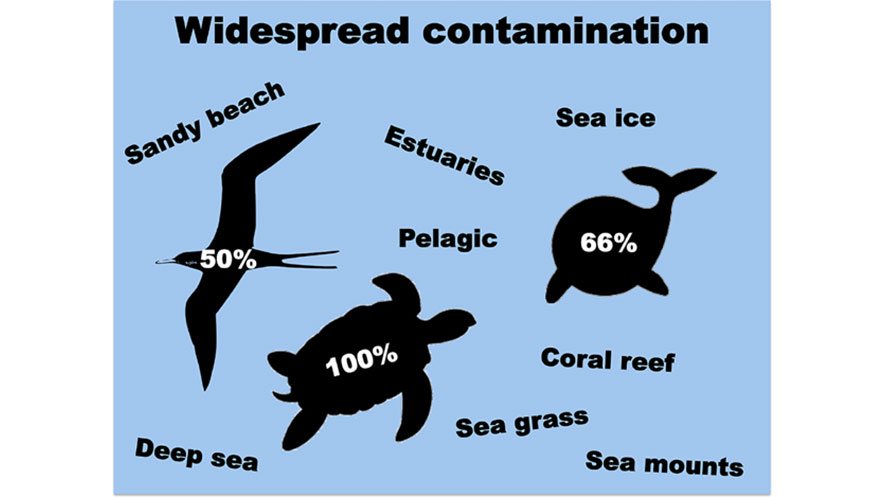Captain Charles Moore introduced the world to the "Great Pacific Garbage Patch" in the mid-1990s. Since then, there has been increasing interest from scientists, the public and policy makers regarding plastic debris in the environment.
A focus article in the July issue of the Society of Environmental Toxicology and Chemistry's journal, Environmental Toxicology and Chemistry, outlines the current research, identifies research gaps on plastic debris and reviews some of the weight of evidence regarding contamination, fate and effects of the material.
The public's interest in the issues and economic impacts of plastic debris has led to an increase in activity from both scientists and policy makers.
Over the last several decades, scientists have generated substantial evidence regarding the widespread contamination of plastic debris. It's not only an eyesore that can disrupt local tourism and fishing--plastic debris can harm or even kill an organism via entanglement, ingestion or smothering. Scientists were able to quantify the amount of debris in the plastic gyres, showing contamination in every ocean, which led to the prohibition of discharging trash into the sea.
The effects of microplastics and nanoplastics are less obvious, and therefore much of the related research is still in its infancy. Most recently, studies about microbeads in personal care products and fiber particles from textiles that wash down household drains have raised concerns among the public. Bans on microplastics in personal care products have already been introduced in the US, EU, Canada and Australia, even as the chemical and biological effect on individual organisms is not fully known.
Other examples of how science has already been used to inform policy change and mitigation include legislation banning or taxing single-use, lightweight plastic bags from stores in parts of North and South America, Africa, Europe, Asia and Australia. In other cases, safer alternatives exist and are within reach, such as waxed paper straws that may eliminate the flurry of plastic straws that make it into our environment every day. Additionally, best management practices, the support of circular economies and public awareness campaigns are underway worldwide.
As new scientific understanding breeds new questions, scientists are working to fill data gaps regarding the fate and effects of plastic debris and the mechanisms that drive these processes. In parallel, policy makers can continue to enforce positive change by addressing mismanagement, determining locations where mitigation may be most critical and deciding what legislation regarding product bans or waste management may be most effective. For the full article, click here.





